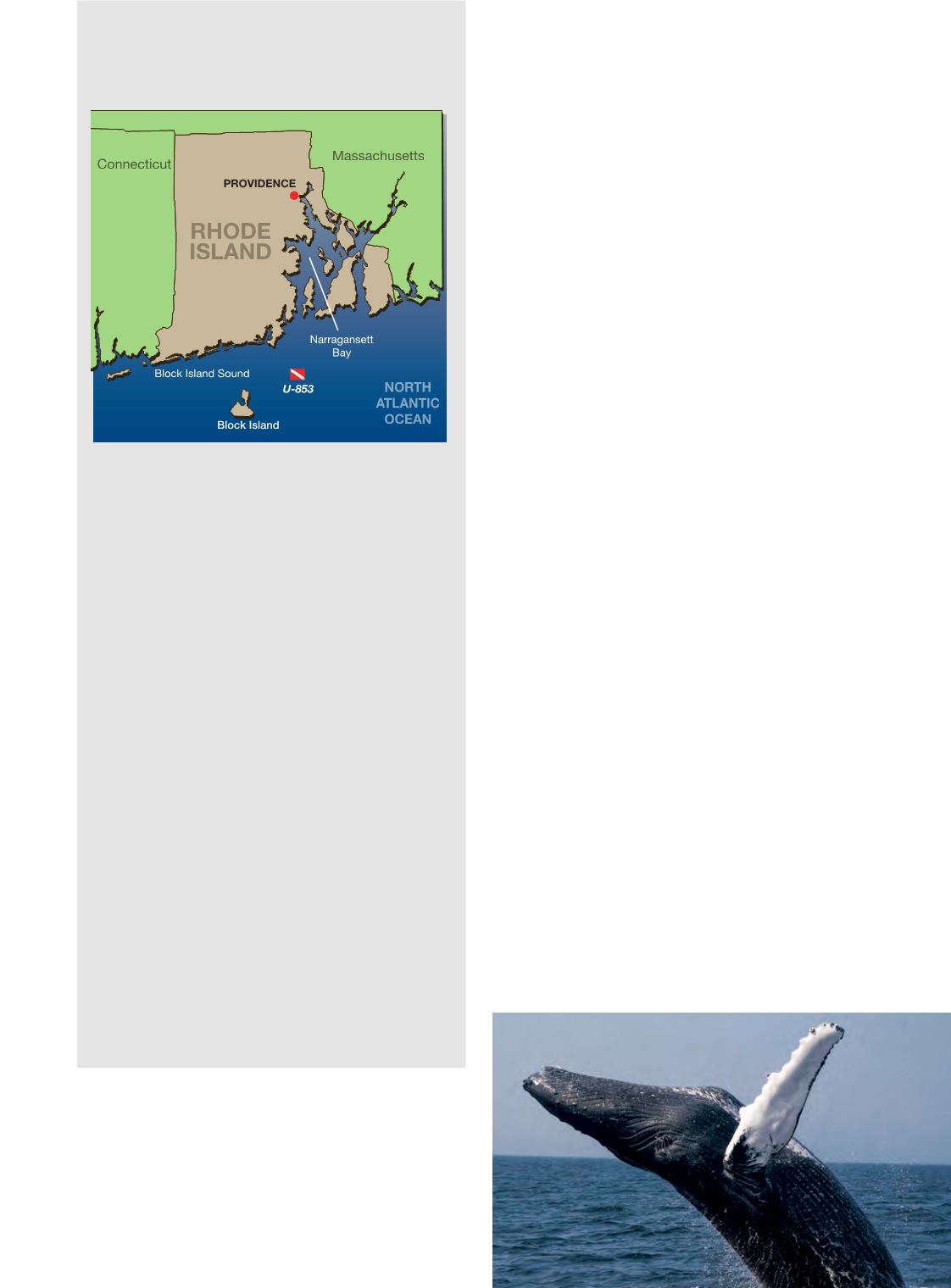
38
|
WINTER 2014
Once acclimated, a mako may stay around the boat for
hours, offering incredible photo and video opportunities
of one of the most impressive sharks in the ocean. If
you get the chance to dive with a mako, it might well be
one of the highlights of your life. They are thrilling to
observe, and their adrenaline is contagious.
GETTING WET
Expeditions to see the blues and makos are cageless
open-water encounters that don’t involve scuba. The
boat chums while drifting with the current over deep
water. A full wetsuit is required along with a hood,
gloves, mask, fins and snorkel. The encounter is geared
toward photographers and videographers. Divers who
don’t have large cameras carry a shark stick, which
is provided. Divers enter the water from the stern,
swim to the side of the vessel and position themselves
with their backs toward the boat.
The crew moves and manipulates a hang bait from
the deck to keep the sharks interested. Blue sharks
typically show a high level of interest in divers and
come extremely close, inspecting you with their large
buttonlike eyes. You’ll need to use your camera or a
shark stick to create a barrier for the sharks to respect.
Blue sharks, which average 6 to 9 feet in length,
sometimes arrive in packs of four to eight and generally
dominate the dives. Makos are rarer; they usually come
alone, and the slightest disturbance can cause them to
dart off, never to return. If a mako shows up, it’s best
to keep quiet and allow the shark to develop some
confidence and decide to stay around. Regardless of
what species arrives first, once you are in the water,
you’ll get plenty of attention and very close encounters.
ADDITIONAL SIGHTINGS
While blue and mako shark encounters are the goal of
these expeditions, nothing is guaranteed. You never
know what you might come across while out at sea.
Other possible sightings include dolphins, humpback
whales, basking sharks, ocean sunfish, smooth
hammerheads, minke whales and more. It’s always
good to have a topside camera on hand just in case
something unexpected appears.
This trip is available for all experience levels; it is
not scuba diving. If you don’t have previous experience
snorkeling or freediving with large sharks in open
water, a guide will be in the water with you at all times.
When you’re not in the water, you’ll have plenty of
opportunities for topside photography.
AD
CONDITIONS:
Shark season in Rhode Island runs from June
through August each year. Air temperatures vary from the
low 60s to the upper 80s (°F). One can never be sure of the
weather, especially while on the water, so it’s best to dress
in layers to be prepared for varying temperatures. Expect
water temperatures between 60°F and 75°F at the surface.
GETTING THERE:
Rhode Island is easily accessible by car
from anywhere in the northeastern United States. Domestic
flights are available to Providence, R.I., while coast-to-
coast and international travelers can fly into Boston Logan
Airport. From there, it’s approximately a two-hour drive to
southern Rhode Island.
ON THE SURFACE:
Both Rhode Island and Massachusetts
offer an abundance of natural beauty as well as history,
dining, beaches and summer entertainment. Consider a trip
to Newport, Providence, Boston or Cape Cod for shopping
and dining, or take a Fast Ferry to Block Island or Martha’s
Vineyard for a day.
GENERAL RECOMMENDATIONS:
Book a minimum of two
to three days at sea. These are wild pelagic animals, and
nothing is guaranteed. Rent a car to get from the airport
to your hotel and from the hotel to the dock each morning.
With a car you’ll have the freedom to dine and explore in
the evenings. Day trips last approximately 10 to 12 hours,
departing from Point Judith, R.I., at 6 a.m. If you are prone
to seasickness, be sure to bring medication along with the
usual topside essentials for a day at sea.
For more information, send an email to info@
333productions.com.
HOW TO DIVE IT
A breaching humpback


